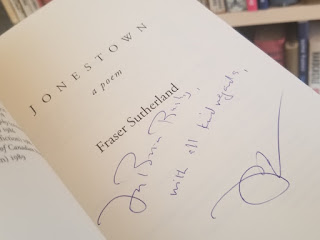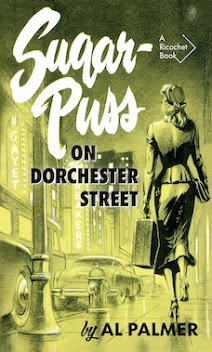The Wife Traders: A Tale of the North
Arthur Stringer
Indianapolis: Bobbs-Merrill, 1936
319 pages
Tooloona: A Novel of the North
Arthur Stringer
London: Methuen, 1936
248 pages
There's a good chance that anyone who's read more than a couple of Arthur Stringer books has been here before. I don't mean Iviut Inlet, the Inuit community in which The Wife Traders is set, I refer instead to the novel's premise. Like A Lady Quite Lost (1931), Man Lost (1934), and Intruders in Eden (1942), it involves a privileged American who, having suffered a crisis, seeks sanctuary and spiritual cleansing in the most remote regions of Canada.* This time out, that man is Owen Winslow, who flees his Park Avenue apartment and expansive Long Island house for a cramped cabin in Ungava.
Richard Stendal, not Owen Winslow, is the novel's main character. He's been pursuing Celina, the beautiful, leggy wife Winslow abandoned. Though Celina appreciates Stendal's assistance in these trying times, referring to him as her "knight," she remains faithful to her husband. Stendal likes to think Winslow is dead, while Celina is certain that he's alive.
Turns out Celina right.
By chance, the missing man's image is captured – if only fleetingly – in a film of an Inuit walrus hunt in Ungava. When screened, months later at a meeting of Explorers' Club, one of the men in attendance recognizes Winslow in the footage.**
Celina asks Stendal to travel to Ungava, find her husband, and convince him to return to New York.
It seems a rather large request, but then Stendal has been so very helpful in the wake of Winslow's disappearance, right?
The Wife Traders begins with Stendal's arrival at Iviut Inlet, at which the walrus hunt had taken place. There he finds the errant husband shacked up, quite literally, with a young Inuit woman by the name of Tooloona. Winslow considers her his wife.
Now, given Stendal's thing for Celina, one might think that he'd let matters lie and report the bigamy upon his return to New York. If so, one would be mistaken. Instead, Stendal does all he can to break up the couple, going so far as to bribe Ootah, the local shaman, into telling Tooloona that she must leave Winslow.
Stendal's motivation isn't spelled out until quite late in the novel, though I imagine more thoughtful readers than myself might spot it early on. From the start, Stendal sees Tooloona as primitive, a savage, an animal. Even after she saves his life, he compares her to a "faithful dog." Yet, inwardly, he struggles with his growing physical attraction to Winslow's new mate:
He failed to remember the day or the occasion when he first grudgingly admitted that her body was a beautiful one, that there was something arresting in even the triangulated face with dark tangle of lashes along the smooth cheek, too pale to be called a daffodil-yellow and too dark to be compared to a gardenia. But he had not been compelled to revise his earlier estimate of her. Nothing was gained, he knew by contending that she was an undersized and flat-faced barbarian who exuded the odor of fish oil. It was the white man's duty to be loyal to his white race.
And there you have it.
A bold statement is made on the dust jacket of the American edition:
I've not seen the jacket for Methuen's first British edition, but don't imagine it makes a similar claim. The editor's red pen is found throughout, beginning with the title. The Wife Traders – problematic at best – is replaced with Tooloona. Other changes are much less apparent. Now and then a sentence is struck, and there are occasional word substitutions, like "wonton" for "bitch." The twentieth chapter sees the longest single cut – nearly two pages – in which Winslow criticizes Stendal's assessment of the Inuit as smelly.
The most eye-popping sentence in The Wife Traders does not feature in Tooloona. Anyone curious will find it on page 83, at the very end of Winslow's inept defence of the Inuit woman:
"I'll concede that she has her own ars erotica. That's imposed upon her, I suppose, by her environment. She has to be warmer-blooded, in a country like this, just as she has to wear warmer clothing. You can write it down to Nature's plan for keeping the race going. Where the soil is thin there must be no mistake about planting the seed. I'm not a medical man enough to know how true it is that the Innuit vulva is more prominent and prehensile than the white woman's."
The Wife Traders is a well-intentioned book, but doesn't transcend the time in which it was written.
Or does it?
The Inuit are seen through the eyes of Stendal, Winslow, and Celina (yes, she eventually shows up). Stendal is a white supremacist. Winslow appreciates Inuit culture, but only when it doesn't cross his own beliefs. Interestingly, it's late-to-arrive Celina who has the greater recognition and appreciation of the Inuit – Tooloona above all. Though Winslow likes to think that he understands the Inuit of Iviut Inlet, his fragile ego leads to tragedy.
Someone is killed.
It wasn't the character I wanted dead.
* Stringer's 1927 novel The White Hands, in which a pair of Jazz Age sisters are sent off North Ontario, provides a bit of a twist on the premise.
** I can't help but note that in Helen Dickson Reynolds' truly strange He Will Return (1959), abandoned wife Constance Owen-Jones discovers her husband is still alive through a newsreel street shot.
The Critics Rave:
Trash – and not "good trash" – but none the less will appeal to the vast majority of those who demand nothing but "escape" from their reading. The story of a New Yorker who escapes civilization by joining a tribe of Eskimos in the Far North, "buying" a mate, and evading the claims of wife and home; succeeds in making so-called civilized ideals sufficient excuse for immorality.
– Kirkus, 15 June 1936
Trivia: Iviut Inlet is found nowhere outside Stringer's imagination. It later appears in his 1940 novel The Ghost Plane.
Objects: I have three editions of the novel, the earliest being the Bobbs-Merrill first edition. Bound in green boards, it has stood the test of time. In black boards, Tooloona, the first (and only) British edition, has shown itself a touch more fragile.
To these eyes, the most interesting in my collection is the third. Published in 1955 by Harlequin, it marks the last time Stringer has seen print. As far as I've been able to determine, it's faithful to the Bobbs-Merrill text. Both front and back covers would not make the grade today.


"What secret made him choose the arms of a dark savage instead of the elegance of a penthouse?"
Oh, I don't know. Might it have something to do with being more attracted to women than interior decoration?
Odd that Harlequin describes Tooloona as a "dark savage." Stringer doesn't.
Access: The Wife Traders was first published in 1936 by Bobbs-Merrill and McClelland and Stewart.
Tooloona followed later that same year. And then, of course, we have the 1955 Harlequin paperback.
Used copies of
The Wife Traders begin at US$6.50 (the Harlequin paperback in "Good-Very Good" condition). As of this writing, only two are listed online. Get them while you can! The Bobbs-Merrill appears more common. Asking prices range between US$17.00 and US$85.00. Copies with dust jackets begin at US$30.00.
No copies of
Tooloona are listed for sale online.
Library and Archives Canada, the Toronto Public Library, the London Public Library, Memorial University, the University of New Brunswick, Mount Alison University, Acadia University, Dalhousie University, the University of Toronto, McMaster University, Guelph University, the University of Saskatchewan, the University of Alberta, Simon Fraser University, the University of British Columbia, and the University of Victoria hold one edition or other of
The Wife Traders.
No Canadian library has a copy of
Tooloona.Note: I was inspired to read
The Wife Traders by the 1936 Club week.

Related post:
































